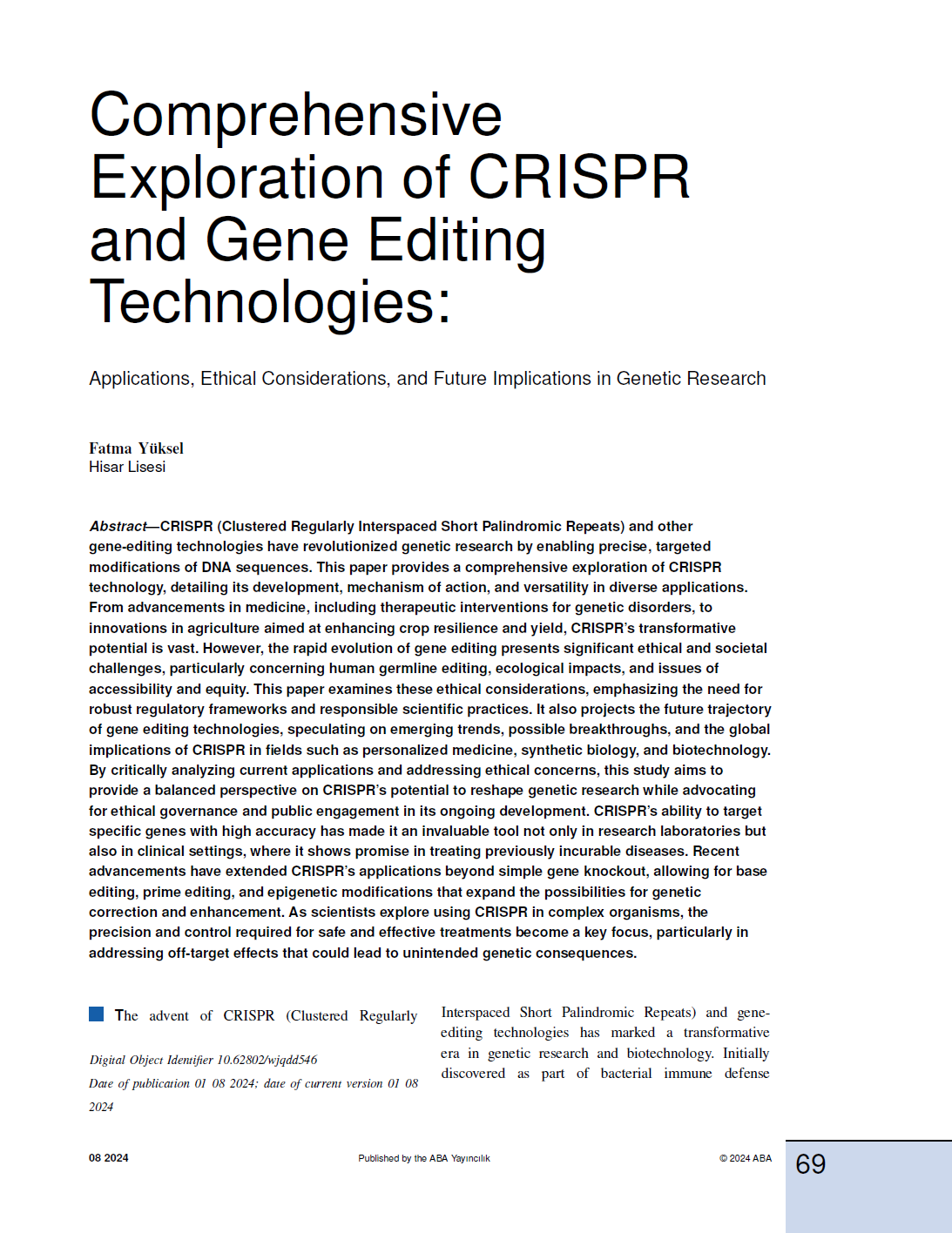Comprehensive Exploration of CRISPR and Gene Editing Technologies: Applications, Ethical Considerations, and Future Implications in Genetic Research
DOI:
https://doi.org/10.62802/3nwhcj06Keywords:
CRISPR, Clustered Regularly Interspaced Short Palindromic Repeats, Gene Editing, DNA Modification, Crop Resilience, Agricultural InnovationsAbstract
CRISPR (Clustered Regularly Interspaced Short Palindromic Repeats) and other gene-editing technologies have revolutionized genetic research by enabling precise, targeted modifications of DNA sequences. This paper provides a comprehensive exploration of CRISPR technology, detailing its development, mechanism of action, and versatility in diverse applications. From advancements in medicine, including therapeutic interventions for genetic disorders, to innovations in agriculture aimed at enhancing crop resilience and yield, CRISPR's transformative potential is vast. However, the rapid evolution of gene editing presents significant ethical and societal challenges, particularly concerning human germline editing, ecological impacts, and issues of accessibility and equity. This paper examines these ethical considerations, emphasizing the need for robust regulatory frameworks and responsible scientific practices. It also projects the future trajectory of gene editing technologies, speculating on emerging trends, possible breakthroughs, and the global implications of CRISPR in fields such as personalized medicine, synthetic biology, and biotechnology. By critically analyzing current applications and addressing ethical concerns, this study aims to provide a balanced perspective on CRISPR's potential to reshape genetic research while advocating for ethical governance and public engagement in its ongoing development. CRISPR’s ability to target specific genes with high accuracy has made it an invaluable tool not only in research laboratories but also in clinical settings, where it shows promise in treating previously incurable diseases. Recent advancements have extended CRISPR’s applications beyond simple gene knockout, allowing for base editing, prime editing, and epigenetic modifications that expand the possibilities for genetic correction and enhancement. As scientists explore using CRISPR in complex organisms, the precision and control required for safe and effective treatments become a key focus, particularly in addressing off-target effects that could lead to unintended genetic consequences.
References
Bock, C., Datlinger, P., Chardon, F., Coelho, M., Dong, M., Lawson, K., … & Zhuang, X. (2022). High-content crispr screening. Nature Reviews Methods Primers, 2(1). https://doi.org/10.1038/s43586-021-00093-4
Holcomb, E., Pearson, A., Jungles, K., Tate, A., James, J., Jiang, L., … & Green, M. (2022). High-content crispr screening in tumor immunology. Frontiers in Immunology, 13. https://doi.org/10.3389/fimmu.2022.1041451
Sherkatghanad, Z., Abdar, M., & Charlier, J. (2023). Using traditional machine learning and deep learning methods for on- and off-target prediction in crispr/cas9: a review. Briefings in Bioinformatics, 24(3). https://doi.org/10.1093/bib/bbad131
Zein-Eddine, R., Refrégier, G., Cervantes, J., & Yokobori, N. (2023). The future of crispr in mycobacterium tuberculosis infection. Journal of Biomedical Science, 30(1). https://doi.org/10.1186/s12929-023-00932-4









